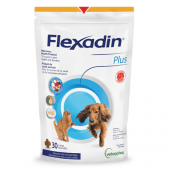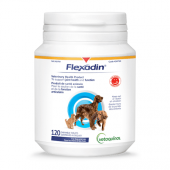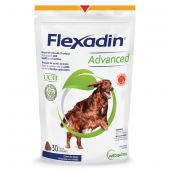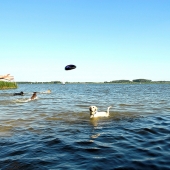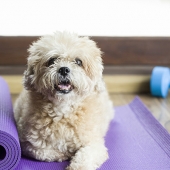While your dog can’t help you bench press your one-rep maximum, they still make a great training buddy. No scheduling, no excuses: they’ll always be thrilled to see you lace up your running shoes. Here are some tips to integrate your dog into your workout routine, so that both of you can reap the benefits of physical activity.
Running with your dog

Dogs love to follow a familiar routine, and you can use this trait to help you achieve your own running goals. If you consistently take your dog for a run at the same time, they’ll grow fond of it and expect you to continue doing so. On those grey mornings where there’s a light drizzle, or when you “just don’t feel like running”, the sight of your dog wagging its tail impatiently by the door may just be what you need to get started.
Make “fetch” part of your workout

After throwing a stick, a ball or a toy for your dog to fetch, you have a few seconds before they bring it back. How many squats, lunges, crunches, sit-ups or jumping jacks can you squeeze in during this time? Repeat the process until you’re both out of breath and thoroughly spent.
Yes, “dog yoga” is a thing

The practice of “Doga” (for dog yoga) either has you guide your pet through specially adapted “dog poses”, or lets the animal become a part of your own yoga poses. Classes can be found in major cities, but most basic exercises are simple enough that you could perform them at home after a quick online search. While dog yoga isn’t much of a workout, it’s a fun way of bonding with your companion.
How to adapt your workout to your dog
Whether you’re already an active person or just starting out, consider integrating your dog into your workout routine progressively. You could start with short training sessions of just five or ten minutes per day, then increase their duration and frequency until you reach 30 minutes per workout, most days of the week. Try keeping a consistent schedule, always training at the same time, to help reinforce the habit in your dog.
Look out for your training partner

Just like you wouldn’t let a human partner train to exhaustion, you need to make sure not to over-exercise your pet. Remember that dogs don’t sweat the way humans do, and signs of fatigue may not be as obvious. Excessive panting, laboured breathing, staggering or refusing to follow along means your buddy need some rest. Make sure to allow for regular rest, water and elimination breaks.
Take your dog’s breed into account
When planning your workout, keep in mind certain dog breeds are more vulnerable to specific health issues. For example, flat-nosed pugs and Boston Terriers can have a harder time breathing under effort, so runs should be kept short, while working breeds like German Shepherds need a lot of exercise to be challenged. Don’t hesitate to ask your veterinarian for activity recommendations based on your dog’s natural abilities.

